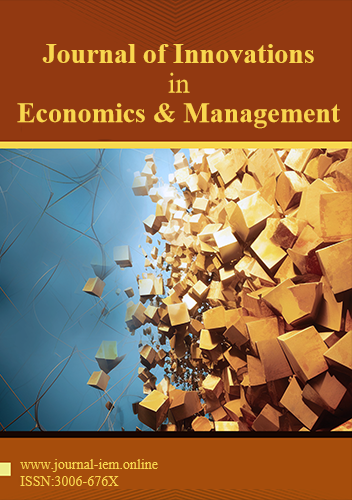 An open access journal
An open access journal
Does the choice of different accounting policies for forward foreign exchange contract hedging affect audit risk? --Take Greenworks Jiangsu as an example
Abstract
Should an enterprise account for a foreign exchange forward contract as a financial asset or a hedging instrument? How might different accounting policies impact the firm’s key financial metrics, and could these metrics imply surplus management motives? Furthermore, does this introduce heightened audit risk for auditors when reviewing derivative financial assets? These questions commonly arise in annual audits of listed companies. This paper addresses these concerns by examining the relevant provisions of CAS22 and CAS24, using Greenworks (Jiangsu) Company Limited as a case study. Through a blend of theoretical analysis and practical insights, the paper identifies specific audit risks that certified public accountants should consider when auditing financial derivatives for listed companies. Practical recommendations are also provided to help mitigate audit risks. By offering strategies for the reasonable use of financial derivatives, this paper aims to reduce the audit risks associated with hedging activities, contribute to research in the field, and support the ongoing advancement of the auditing profession.
Share and Cite
Article Metrics
References
- Gay, G.D. and J. Nam, The Underinvestment Problem and Corporate Derivatives Use. Financial Management, 1998. 27(4): p. 53-69.
- Smith, C.W. and R.M. Stulz, The Determinants of Firms' Hedging Policies. The Journal of Financial and Quantitative Analysis, 1985. 20(4): p. 391- 405.
- Mackay, P. and S.B. Moeller, The Value of Corporate Risk Management. Journal of Finance, 2007. 62(3): p. 1379-1419.
- Gordon, et al., The Impact of Institutional Differences on Derivatives Usage: a Comparative Study of US and Dutch Firms. European Financial Management, 2003.
- Goyal, V.K., et al. Investor Characteristics, Relationships, and IPO Allocations. 2010.
- Fu Zongyao, Empirical Study on the Motivation of Derivative Instrument Usage and the Impact on Firm Value, 2011, Guangdong Business School.
- Wang Xiaoqin & Mi Hong, An empirical study of CSI 300 stock index futures hedging. Academic Forum, 2007(7): p. 4.
- Huang Li, Accounting Disclosures for Derivatives, 2009, Southwest University of Finance and Economics.
- Aman Kim, Does Derivatives Trading Profit and Loss Disclosure Affect Instantaneous Stock Prices? --an analysis based on A-share listed companies in 2020. Journal of Nanjing Audit University, 2022. 19(04): pp. 81-91.
- Zhengqiang Li, Weifeng Ma & Ziwei Zhang, Hedging increases firm value. China Finance, 2024(10): pp. 62-63.
- Oh, H.T. (2015). KIFRS Adoption and Audit Risk. indian journal of science and technology, 8, 547-553.
- Li Liying, Reflections on the Characteristics of Derivative Financial Instruments and Their Risk Management in China. Friends of Accounting, 2008(21): pp. 83-84.
- Ranasinghe, T., L. Yi and L. Zhou, Do Auditors Charge a Risk Premium? Evidence from the Association between Derivative Hedging and Audit Fees. Social Science Electronic Publishing, 2020.
- Cheng Zhe, Research on Auditing Issues Related to Corporate Hedging. Finance and Accounting, 2015(7): pp. 59-61.
- Yu Gaoqi et al, Research on audit risk and effective control of derivative financial instruments. Business News, 2019(24): p. 92.

